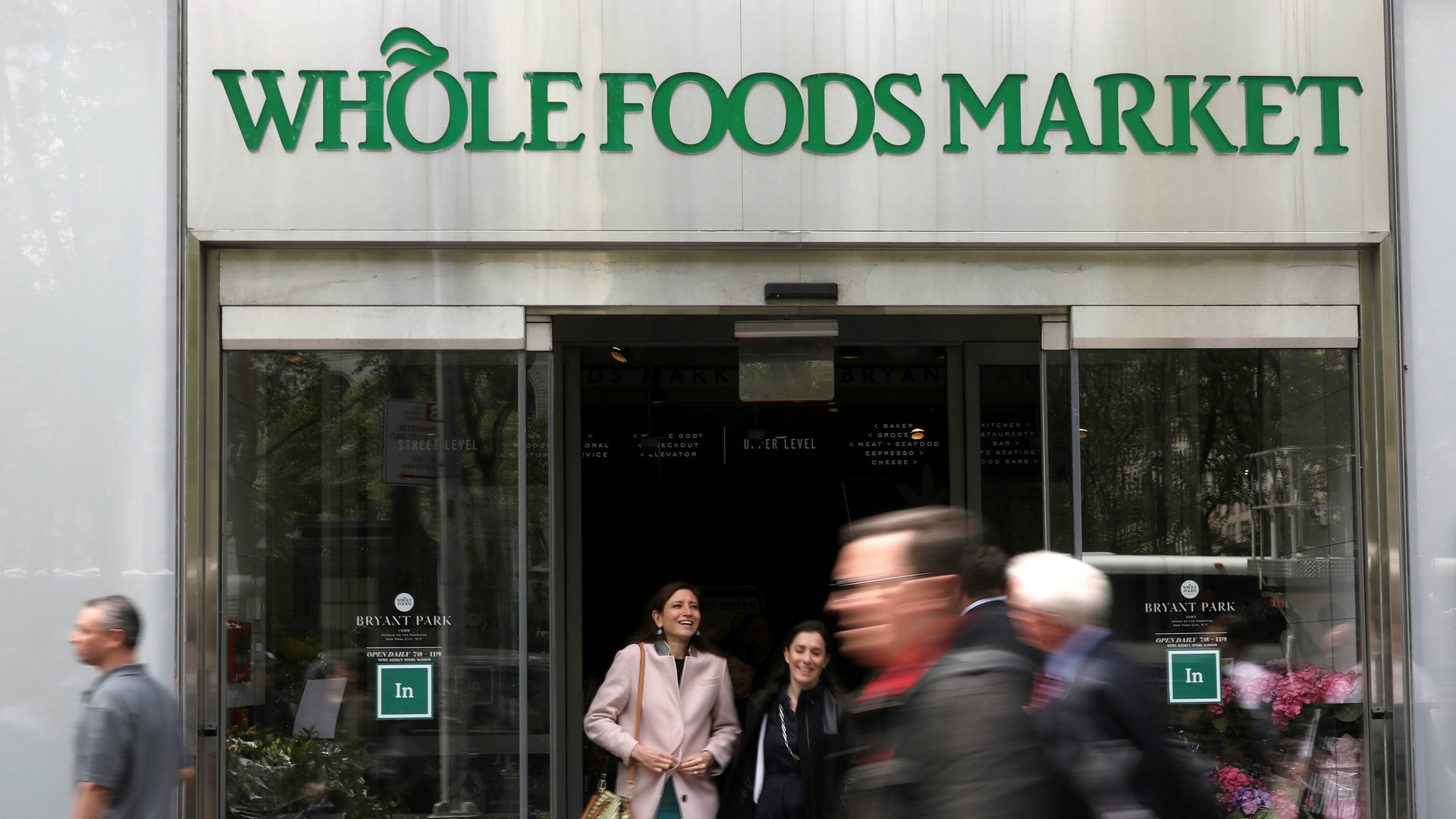Amazon is buying Whole Foods Market for $13.7B—threatening to disrupt three more industries
Jeff Bezos is about to give every neighborhood grocery store the fight of its life.


Jeff Bezos is about to give every neighborhood grocery store the fight of its life.
His company, Amazon, is offering $42 in cash for each Whole Foods Market share—amounting to a $13.7-billion acquisition, the largest in Amazon’s history. Whole Foods stores will continue operating “under the Whole Foods Market brand,” the companies said, and CEO John Mackey will remain in his job.
At once, the announcement rocks three different markets: grocery stores, online shopping, and food delivery. In the last decade, Amazon managed to decimate the brick-and-mortar bookstore industry by offering the convenience of home shopping and cheaper prices. It has since taken that business model beyond books, challenging retailers that sell just about any product imaginable.
In the last several years it has been locked in a battle with the world’s largest brick-and-mortar retailer, Walmart, including in grocery delivery. In purchasing Whole Foods, Amazon not only picks up a mainstream grocery brand with more than 430 physical stores and a well-oiled supply chain, but also a stake in Instacart, the grocery-delivery startup.
So the question becomes: Can Bezos do to groceries what he did to bookstores? And can he cast Whole Foods—a high-quality food store with sky-high prices—in Amazon’s price-competitive image? If so, it will undoubtedly gin up concern in grocery-chain boardrooms across the US.
“Every grocer will remember this day as the beginning of a new era, and many are scared,” says Phil Lempert, longtime grocery analyst.
It’s a sucker punch by Amazon in a herculean fight over the future of shopping, a bid to bring more US consumers into the company’s orbit, and in doing so to invite them to rely more on the internet than their cars when purchasing household goods.
For Whole Foods, the acquisition comes during a period of trouble. For seven straight quarters, same-store sales have shrunk, sparking leadership changes and the hiring of a top-tier consulting firm to standardize its stores.
The brand rose to prominence and flourished in America during a time when consumers sought access to organic foods and health products. But over time, competitors such as Kroger, Trader Joe’s, Meijer, Albertsons, and even foreign brands such as Aldi and Lidl, caught up, offering cheaper prices for many of the same goods. Now it’s become all-out war in a fight over consumer pocketbooks.
And that’s what makes the Amazon acquisition so interesting. It has dabbled in the grocery-delivery business for the past few years. In purchasing Whole Foods, Amazon just fired a shot across the bow of an industry that has been slow to adopt online food shopping.